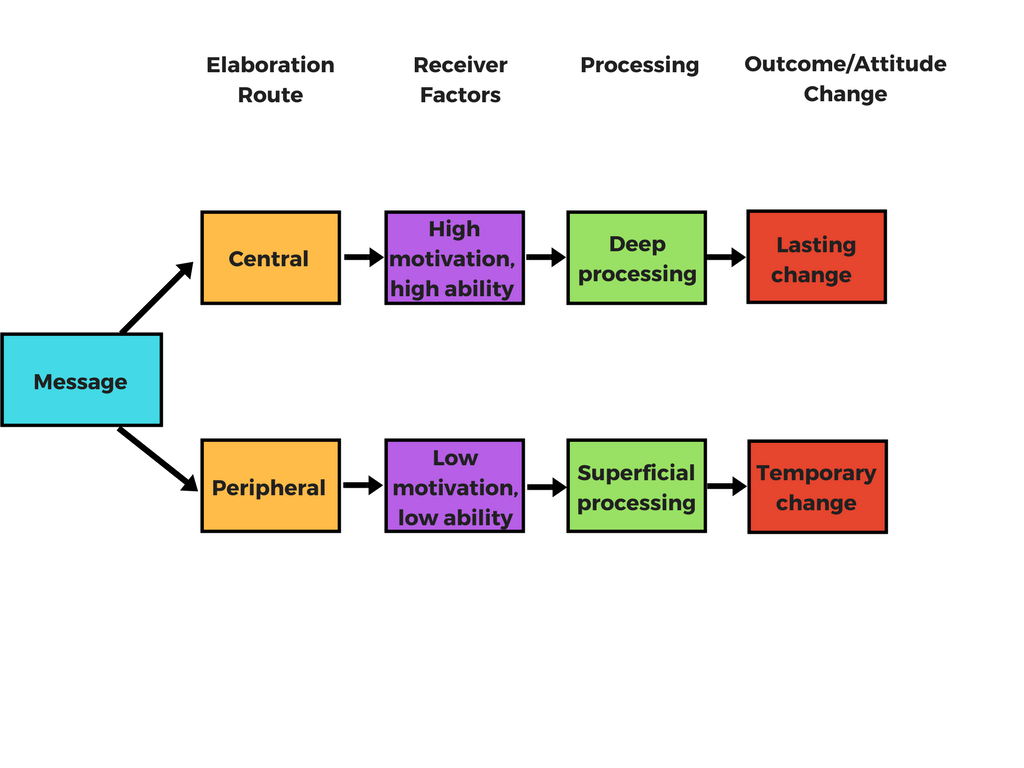With Australian consumers spending over 10 hours each day glued to an internet-connected device, the power of persuasion is critical to your website’s success. Persuasive content is about more than just a few zingy, Don Draper-esque one-liners.

Why are some ideas naturally more convincing than others?
Why do people respond so positively to certain communication messages, even if they come from relatively unknown sources?
What makes carefully written, well researched, and informative pieces content fall flat sometimes?
Questions like these drive marketing teams, content writers and business owners up the wall.
Having been driven up that wall myself on several occasions, it is my duty to share what I have learned about crafting web-based content to help you become a more persuasive writer.
Structure first, everything else second
Before you crack your knuckles and put the kettle on for a marathon writing session, you need to develop a structured approach. Structure generates content that:
- Is easier to process and consume
- Is less challenging to navigate more convincing points, and
- Organises the reader’s thinking logically
Web readers skim pages looking for something of value, some reason to stick around.
When interacting with multimedia, humans instinctively adopt strategies that automatically eliminate non-essential information to reduce cognitive load.

You only have a few seconds to show your reader what they should expect if they invest more time and effort.

I call this the Headline Deadline, and it comes around quickly.
Start by building out the skeleton of the argument. The main heading and subheadings are the reference points that distill your main ideas down to the essence. Challenge yourself to create a sequence of headings that would stand up as a story on their own.
If all of the paragraph text in your content were suddenly changed into a foreign language and only the headings remained, could your audience piece together your message?
It is exponentially more difficult to generate a cohesive argument on the fly, so commit to having the key points of your message crystal clear in your mind before you start your first draft.
You can always expand and modify your ideas as you progress, but sitting down to a completely blank page and expecting everything to fall in place is a tough slog.

How does content shape consumer attitudes?

Attitudes arise from three basic foundations:
- Emotion (Feeling)
- Cognition (Thinking)
- Behaviour (Doing)
Attitudes are long held opinions toward an object or subject.
Influencing attitudes is at the heart of a content marketing and persuasive writing. By tapping into the foundations of attitude formation, marketers can develop content that shifts the customers perception.
In some cases, your target market may not have had enough exposure to have even formed any kind of attitude toward your offering or category. If your research suggests that the market is lacking in this respect, experiment with persuasive content that offers a comprehensive and unique perspective to build favourable attitudes toward your brand.
What is persuasion and how does it work?
Persuasion is the process of influencing one’s beliefs, attitudes and behaviours toward a specific object, event or idea. In the business world, persuasion has formed the basis of most marketing efforts since the dawn of economic exchange. The long term success of every organisation, from non-profits to national retailers, relies on successfully persuading the people that matter the most to them.
For marketers, persuasion is an artform that exists across all modes of communication, closely linking to products, services and issues where the brand has some authority.
Brands like Apple that possess the uncanny ability to get others to see things their way usually make it a powerful and profitable habit.
HubSpot is another perfect example of how persuasive content forms the basis of a successful inbound marketing strategy. They meet the needs of their target audience head-on with exceptionally compelling solutions to virtually every problem faced by modern marketers. Detailed, informative, logical and practical sum up Hubspot’s persuasion approach pretty well.
But how do those brilliant content ideas you have transform from thousands of eager, fizzing neurons in your brain into high-converting, persuasive content that your audience cannot resist?
To understand how receivers of persuasive messages interpret and process them, we are going to borrow the Elaboration Likelihood Model from a couple of renowned social psychologists, Richard Petty and John Cacioppo.
Two routes to persuasion: The Elaboration Likelihood Model

The ELM (adapted from Petty, Cacioppo, 1986)
The Elaboration Likelihood Model (ELM) is a simple tool to help you frame the arguments presented in your content.
The two routes to attitudinal change represent opposite ends of the persuasion spectrum, but in reality it is likely that most people will take a path that combines some elements of both. The context in which the message is received will dictate which of the two paths is more dominant.
Here’s the nuts ‘n’ bolts of the ELM for you:
- Message recipients use motivation and reasoning to accept or reject the message
- The model presents two message processing alternatives, either the Central or Peripheral Route
- The Central Route is characterised by strong, informative arguments where the receiver is motivated and able to process the information, leading to lasting attitudinal change
- The peripheral route is characterised by superficial arguments targeting the receiver’s emotional response by using social proof, perceived authority and reciprocity, requiring less cognitive processing, leading to temporary attitudinal change
- The different routes are more effective based on the type of audience and message being communicated
Applying ELM to your writing
Applying the ELM to help create more persuasive content starts with understanding the context and identifying the audience.
Let’s work with an example:
Let’s imagine you are creating a landing page for a law firm, specialising in contractual law.
The objective of the landing page is to convince visitors that the law firm are experts in their field and can help clients negotiate the murky world of contract law with ease.
A landing page for a relatively niche service like contract law is likely to attract visitors with a high degree of involvement. If someone searches for contract law services, there is a good chances they have some business experience and have a specific set of needs to be met.
This audience is more likely to be influenced through the elaborated, central route of persuasion. The readers have the motivation to invest their mental energy into processing each proposition made on the law firm’s landing page in detail, as there is a considerable financial investment at stake.

Visitors to this landing page would also have the ability to understand legal and business jargon, making it possible for them to cognitively process the message.
The ELM suggests that the most effective way to influence people in this context is to provide detailed and comprehensive arguments and evidence relating to the firm’s contract law services. The audience will be less concerned with peripheral elements of the message, so their needs to be some real substance to the content.
Crafting the message in this example would require:
- A deep understanding of the motivational factors that drive an individual to search for this particular service
- A clear, concise message explaining what the service provides, how it improves the situation of the reader and what the expected outcome would be
- Pre-empting the likely counter-arguments that the reader will conjure up when reading the content
Conversely, the peripheral route to persuasion tends to be utilised when there is less need or ability to process complex information.
Checking back in with the law firm from our previous example, let’s imagine the firm is diversifying its service offering. They now provide low-cost legal solutions for folks that have landed in a bit of hot water with minor traffic infringements.
It is fair to say that the target audience for these services are probably not too keen on deciphering the finer points of motor vehicle legislation; they just want their legal troubles to be finalised with minimum fuss.
So the content team gets together and determines that the message will entail:
- Peripheral cues that do not demand deep cognitive processing
- Social proof by including brief testimonials from past clients that have had a positive experience
- Offering a ‘No Win-No Fee’ arrangement, compelling the receiver to act based on a superficial benefit
- Presenting an alternate scenario in which the reader is left with a suspended licence and a hefty fine
Humans are incredibly complex, semi-rational and very difficult to understand at the best of times. That’s part of the reason content marketing is so much fun.
When the marketing hat goes on, we get to dive into the inner workings of the human mind, then create content and test to determine the ideal formula.
Understanding more about how consumer behaviour works is an ongoing challenge for anyone involved in marketing, advertising, promotions and communications.
Be sure to check out the following reading list if this article captured your imagination:


